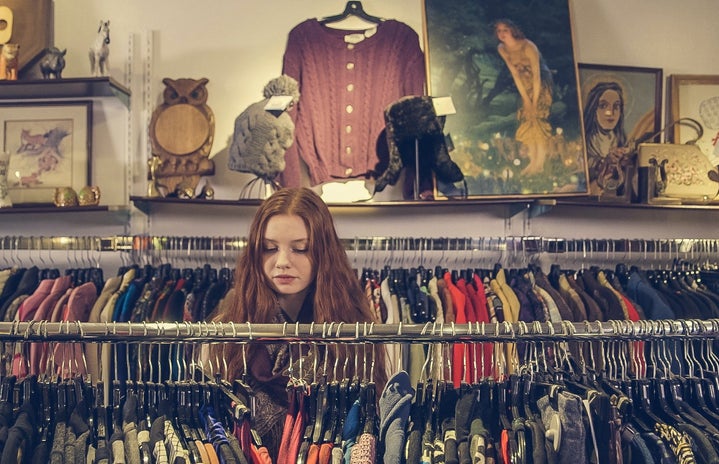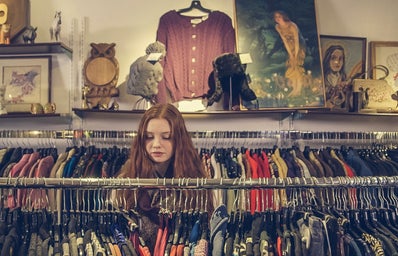The textile industry has recently been under some hot water, making people flock toward thrift stores as a guilt-free alternative to finding clothing. None of this is bad; the trend towards being environmentally friendly is something that can only be beneficial. Therefore, there is a multitude of problems that have arisen with the rising popularity of thrifting.
Value Village is one of the most popular thrift stores out there. This popularity has been cultivated by a plethora of videos showcasing thrifting halls coupled with the thrift look being popularized on social media. None of this within itself is bad, I personally used to love Value Village and most of my clothes are from there. Value Village, however, has lost touch with its consumer base as the rise of popularity has made the company become greedy. The increase in prices has not matched an increase that would be on par with inflation. Instead, the company has strangely raised its prices to increase profit. This wouldn’t be so bad if the company was, in fact, a not-for-profit company.
As you enter Value Village, there are now announcements overhead letting people know that Value Village is, in fact, a for-profit company. Value Village is owned by Savers, which in turn is owned by the conglomerate of TPG Capital. This comes as a shock for many people as the company operates under a for-profit agenda and is ruled by people who are out of touch with what Value Village represents to most of us. Most people shop under the assumption that the money they spend goes to help other people. In buying used clothes that are both saving textiles from the environment and giving back to the community. To this effect, the populous has been duped and the things about Value Village which draw people towards it are known to be untrue.
To this extent, Covid has greatly affected Value Village and the way the store is used. Not only have prices gone up, but the company has strategically increased prices on premium goods such as silk, cashmere, wool and brand-name items. Most people who donate these items do so with good intentions, assuming that underprivileged people may find a use for it. By increasing these prices specifically, Value Village has become more like a second-hand consignment store or boutique rather than a thrift store. The low process of Value Village is justified to the consumer as we put in the time to sift through the merchandise. A curated store can justify higher prices as the curation process is already done, effetely meaning that we pay for the time saved. By increasing the prices and keeping the same thrifting model, Value Village is losing touch with what the thrifting community takes pleasure in. Looking through items for hours to feel justified when you find a unique piece, a score that you can’t pass up for the price. This strategic increase makes Value Village elitist as some things are priced way out of the range of the intended consumer. To that effect, it also leaves a bad taste in people’s mouths as it is not aligned with the consumer base Value Village has built.
Covid has also caused Value Village to get rid of their change rooms, something other thrift stores had not done, such as Talize. This means that customers are forced to assume their size and commit to an item without being able to try on a garment. This wouldn’t be such a bad thing to ask if the prices were lower, but considering the above-inflation rate prices, this policy seems ridiculous. By not having change rooms, the company effectively makes more of a profit as people are more likely to buy pieces they don’t like, being unable to return them. They corner the consumer into purchasing items offering little opportunity to return the item.
This brings us to their return policy. With change rooms being closed, one would assume that you would be able to fully return an item as you cannot try it on. Instead, you have two weeks to exchange if you do not like the item. They do not even offer the option of store credit. This forces the consumer to go back, spend time in the store effetely finding new items and usually will result in someone paying more than what the lost cost of the item was. This model puts so much effort onto the consumer that it psychologically forces them to buy more items so that they feel as though their money didn’t go to waste.
I personally love Value Village and have no issue with it. It is the lesser of a lot of evils in the textile industry. However, there are some changes that need to be made for them to keep their consumer base satisfied. As of right now, thrifting has become unpleasurable and more people have opted to go to Poshmark and Depop to find specific items. Let me be clear, their prices are still so much cheaper so that they will not lose enough business to make these changes. However, I can sense the growing displeasure within the target audience, which, if not addressed, will cause problems down the road. More transparency about their practices is the first essential part. For so long, they have made people believe they are a non-profit. The more they are misguiding the consumer like this, the longer it will take to gain back the consumer’s trust. The rise in prices needs to be justified in other ways. Prices sometimes need to be raised and if you are going to raise prices on certain items, there needs to be a way to get a FULL refund or store credit. Especially with the lack of ability to try on items, Value Village is effectively manipulating and taking advantage of our current economic state. I would suggest that they do not raise prices on specific items as this directly goes against the lifestyle of thrifting, but if their profit margins say otherwise, at the very least, they should either bring back change rooms or allow for store credit/returns.
All in all, Value Village is a great way to get cheap clothing, try new styles and has been a staple in our community for our immigrant population and lower classes. As it enters more mainstream media, it is only natural that people from wealthier backgrounds would be interested in thrifting. This shift in demographic should not allow for the core ideologies behind thrifting to be tarnished. People who have the ability and buying power to not shop at Value Village should be conscious of the fact that the new business model affects other communities more so than themselves. The rise in prices may not be as shocking to you as it is to others. However, middle-classes are not to blame; with the new added attention and Value Village should be taking this opportunity in popularity to do good, not be greedy. Value Village gets their inventory for free, there is no lack of product and most of their clothing goes to landfills anyways. There is no reason to place blame for their poor business practices onto the middle-classes getting into thrifting. Instead, the company itself needs to be held accountable and needs to reassess the way they are managing their company as they seemingly have lost sight of what thrifting means.


